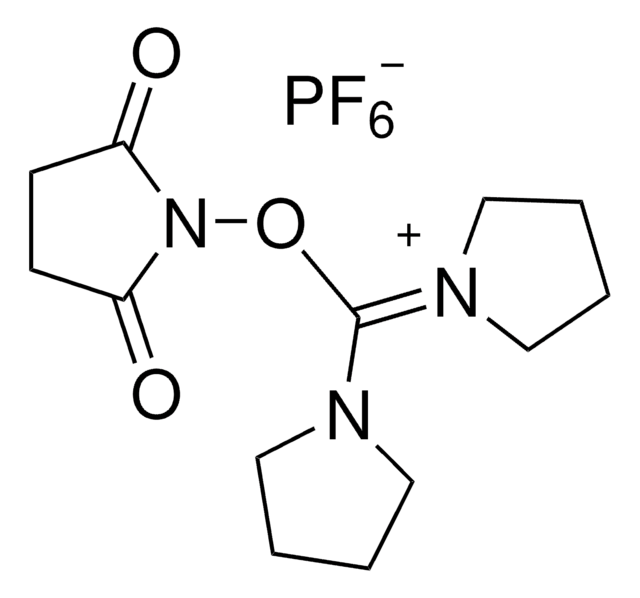87472
Hydrogen chloride solution
~3 M in 1-butanol, for GC derivatization, LiChropur™
About This Item
Recommended Products
Product Name
Hydrogen chloride - 1-butanol solution, ~3 M in 1-butanol, for GC derivatization, LiChropur™
grade
derivatization grade ((GC derivatization))
for GC derivatization
Quality Level
form
solution
quality
LiChropur™
reaction suitability
reagent type: derivatization reagent
reaction type: Acylations
concentration
~3 M in 1-butanol
technique(s)
gas chromatography (GC): suitable
density
0.87 g/mL at 20 °C
storage temp.
2-8°C
SMILES string
Cl
InChI
1S/ClH/h1H
InChI key
VEXZGXHMUGYJMC-UHFFFAOYSA-N
General description
- It improves the stability of compounds by protecting unstable groups.
- It may confer volatility on substances such as carbohydrates or amino acids, which have so many polar groups that they are non-volatile and normally decompose on heating.
- It assists in separations not possible with underivatized compounds.
- Compounds are detectable at very low levels with an ECD.
Hydrogen chloride-1-butanol is a reagent utilized to form fragmentation-directing derivatives for GC/MS analysis.
Application
Other Notes
Legal Information
Signal Word
Danger
Hazard Statements
Precautionary Statements
Hazard Classifications
Acute Tox. 4 Oral - Eye Dam. 1 - Flam. Liq. 3 - Met. Corr. 1 - Skin Irrit. 2 - STOT SE 3
Target Organs
Respiratory system
Storage Class Code
3 - Flammable liquids
WGK
WGK 1
Personal Protective Equipment
Choose from one of the most recent versions:
Already Own This Product?
Find documentation for the products that you have recently purchased in the Document Library.
Customers Also Viewed
Our team of scientists has experience in all areas of research including Life Science, Material Science, Chemical Synthesis, Chromatography, Analytical and many others.
Contact Technical Service





